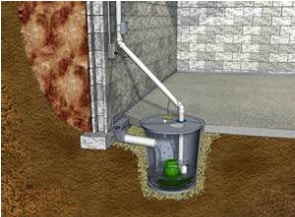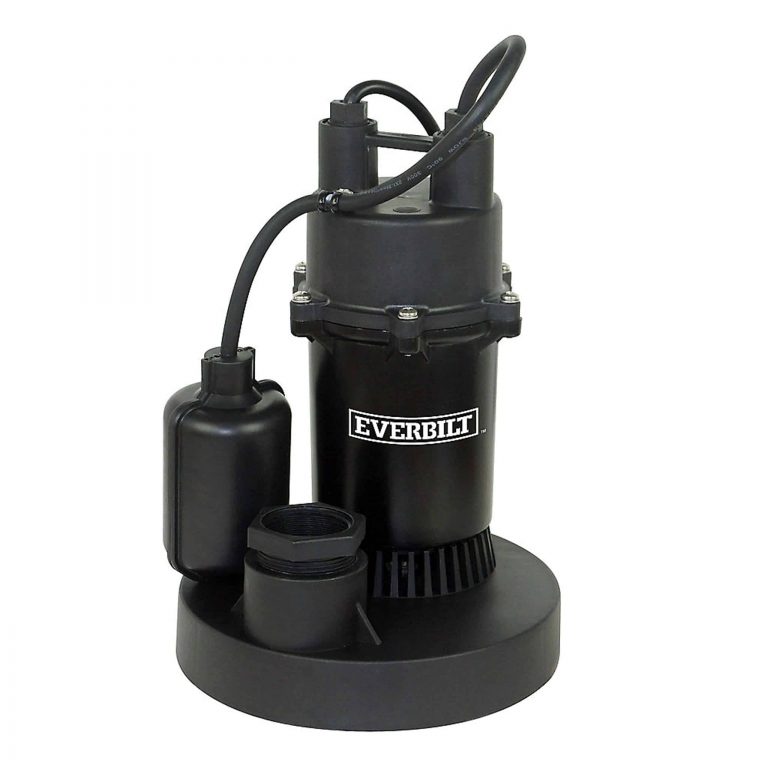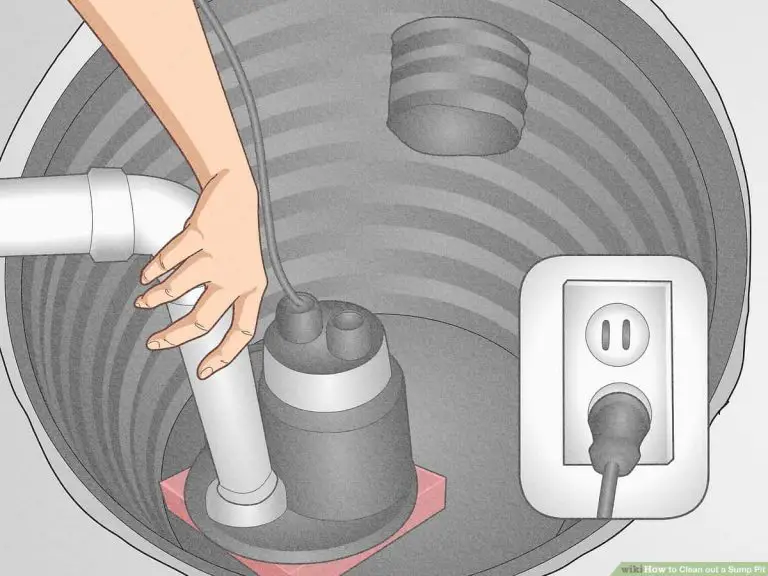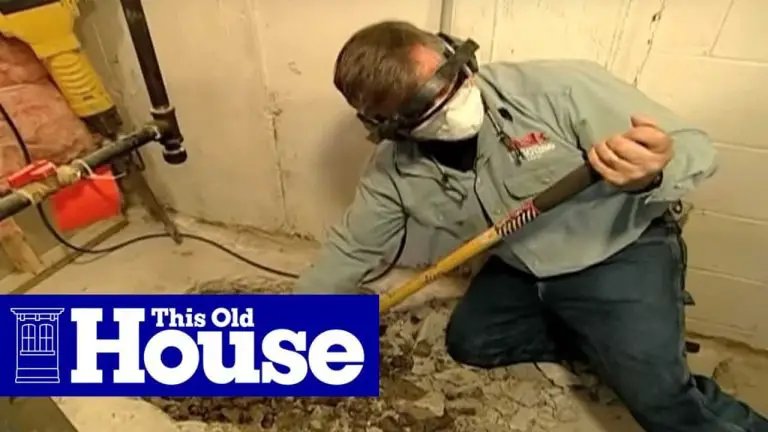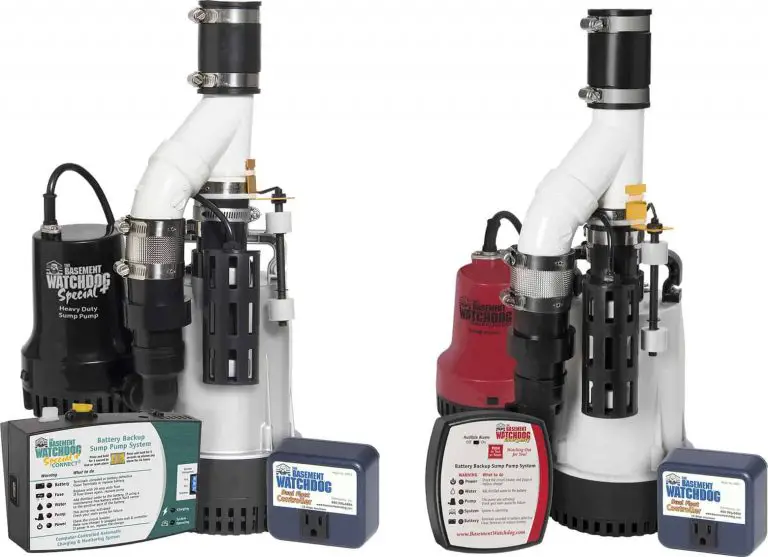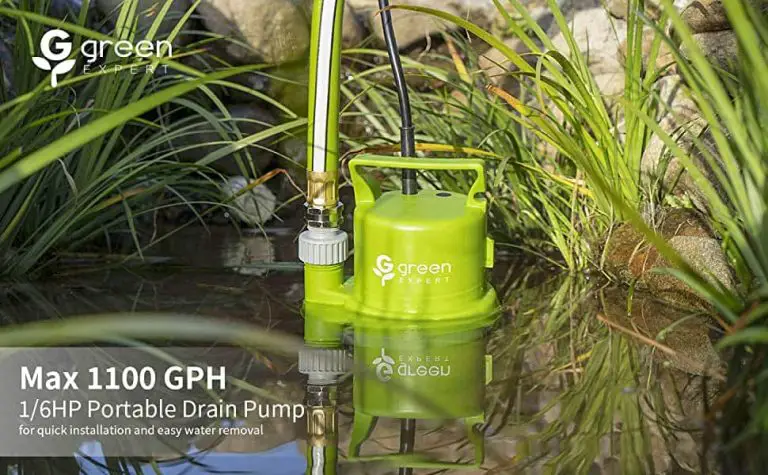How Can a Sump Pump Not Work During a Torrential Rain
A sump pump is a mechanical device that is installed in the basement of a home. Its purpose is to remove water that has accumulated in the sump pit and to prevent flooding.
A sump pump typically consists of a float switch, a pipe, and a submersible pump. The float switch activates the pump when the water level in the pit reaches a certain point.
The pipe then carries the water away from the house. A sump pump can fail for many reasons, but one of the most common is power outages.
If there is a power outage during a rainstorm, your sump pump will not be able to operate. Another common reason for failure is if the float switch gets stuck in the “on” position.
This can happen if debris or sediment builds up around it. If this happens, your pump will run continuously until it burns out or you manually turn it off.
If you have a sump pump in your basement, you may be wondering why it doesn’t seem to work during torrential rains. There are a few reasons for this.
First, the amount of water coming into the basement may be too much for the sump pump to handle. Second, the power source for the sump pump may be knocked out by the storm.
Lastly, the discharge pipe for the sump pump may become clogged with debris or leaves, preventing it from working properly. If you find yourself in this situation, there are a few things you can do.
First, try to clear any debris or leaves from around the discharge pipe. If that doesn’t work, you can try using a garden hose to direct water away from the basement and into an area where it can drain safely. Finally, if all else fails, you can always call a professional plumber to come and take a look at your sump pump system.
Sump pump working non stop after heavy rain, underground water flowing in like crazy
Sump Pump Runs Every 30 Seconds During Rain
If your sump pump runs every 30 seconds during a rainstorm, there’s a good chance that it’s not sized correctly for your home. Sump pumps are designed to remove water that has accumulated in a sump pit, typically located in the basement or crawlspace of a home.
The size of the sump pump you need depends on the volume of water that can accumulate in your sump pit and the rate at which it will drain. If your sump pump is running constantly during a rainstorm, it’s probably because the rainfall is exceeding the pump’s capacity.
This can happen if your sump pit is too small, or if there’s something blocking the flow of water out of the pit (such as a clogged discharge pipe). If you think your sump pump might be undersized or there could be an obstruction in the discharge pipe, contact a plumber or waterproofing contractor to investigate further.
Sump Pump Running Constantly After Heavy Rain
If your sump pump runs constantly after a heavy rain, there are a few possible explanations. First, the most common reason is simply that the ground around your home is saturated and water is seeping into the sump pit.
This is particularly likely if you have had several days of heavy rain in a row. The best solution in this case is to wait for the ground to dry out and hope that future rains aren’t as severe.
Another possibility is that there is something wrong with your sump pump itself. If it’s an older model, it may be less effective at pumping water out of the pit.
Or, there could be debris clogging the pump or preventing it from operating properly. In this case, you’ll need to clean or repair your pump as necessary.
Finally, it’s also possible that your home’s drainage system isn’t adequate for the amount of rainfall you’re getting. If water is quickly draining into your sump pit faster than the pump can remove it, you may need to install additional drains or make other changes to improve drainage around your home.
How Often Should My Sump Pump Run During Rain
If you live in an area that experiences a lot of rain, you may be wondering how often your sump pump should run. The answer to this question depends on a few factors, including the amount of rainfall and the size of your sump pit.
In general, most sump pumps will need to run for about 30 minutes during a one-inch rainstorm. If you live in an area that experiences heavier rainfall, your sump pump may need to run for longer periods of time.
Conversely, if you have a small sump pit, your pump may not need to run as often. It’s important to keep an eye on your sump pump during rainy periods, as too much water can cause problems. If your pump is running constantly or if it seems like it’s struggling to keep up with the water level, it’s best to contact a professional for help.
Can a Sump Pump Be Fully Submerged
A sump pump is a pump that is used to remove water that has accumulated in a sump pit. The water is typically pumped out of the pit and away from the building so that it does not cause flooding or other damage. A sump pump can be fully submerged, but it must be installed correctly to prevent damage to the pump.
Sump Pump Dry After Heavy Rain
If your sump pump is dry after a heavy rain, there are a few possible explanations. The most likely cause is that the pump wasn’t able to keep up with the rainfall and the water level in the sump pit rose too high, causing the float switch to trigger and shut off the pump.
Another possibility is that there was a power outage during the storm and your pump didn’t have a backup power source. Whatever the cause, if your sump pump is dry after a heavy rain, it’s important to investigate and address the problem so that your basement doesn’t flood next time there’s a downpour.
Sump Pump Check Valve
If you have a sump pump in your home, it’s important to have a check valve installed. The check valve prevents water from flowing back into the sump pit after the pump has turned off.
Without a check valve, your sump pump will have to work harder and use more energy to remove the same amount of water from your basement. There are different types of check valves available, but they all work in basically the same way.
When the float switch on your sump pump activates, the pump turns on and starts moving water out of the pit. As water is pumped out, the level in the pit drops and eventually activates the float switch again, causing the pump to turn off.
At this point, a check valve is essential to keep water from flowing back into the pit. The valve opens when water flows through it in one direction (toward the outlet), but closes when water tries to flow in the opposite direction (back into the pit).
This way, once the pump has turned off, no water can enter back into system and overload it. Installing a check valve is usually a pretty easy job that most homeowners can handle themselves. If you’re not sure how to do it or don’t feel comfortable tackling this project yourself, though, you can always hire a professional plumber to take care of it for you.
How Does a Sump Pump Work
A sump pump is a device that is used to remove water that has accumulated in a sump basin. A sump basin is usually located in the basement of a home and collects water that has seeped through the foundation or walls.
The water is then pumped out of the basin by the sump pump and away from the home. Sump pumps can be powered by electricity or by a battery.
Constant Water Flow into Sump Pit
If your sump pump is constantly running water into the pit, there are a few possible causes. First, check the float switch to see if it is stuck in the “on” position.
If it is, simply unstick it and return it to its normal position. If the float switch is not the problem, then it is likely that the intake screen on the pump itself is clogged with debris.
Cleaning or replacing the screen should fix the problem. Finally, if neither of these solutions works, you may need to replace your sump pump altogether.
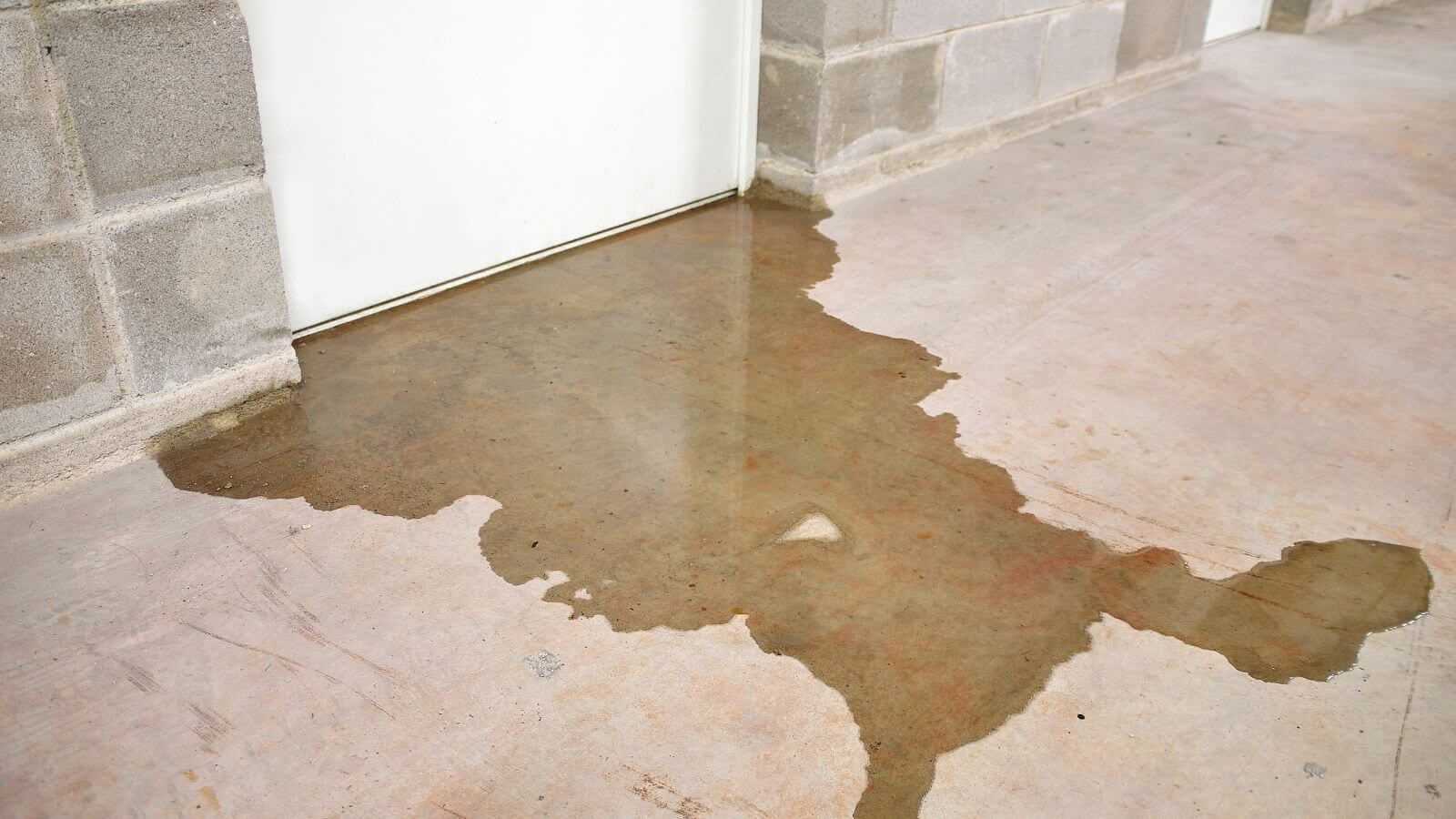
Credit: www.geiler.com
Does Heavy Rain Affect Sump Pump?
If you have a sump pump in your basement, you may be wondering if heavy rain will affect its performance. The answer is yes and no.
It depends on the amount of rainfall and the condition of your sump pump. A sump pump is designed to remove water that has accumulated in a sump pit.
This can happen during periods of heavy rain when groundwater levels rise and water seeps into the pit through cracks in your foundation or other openings. If there is only a small amount of water in the pit, the sump pump should be able to handle it without any problems.
However, if there is a lot of water, or if the pump isn’t working properly, it may not be able to keep up with the inflow and the basement could flood. To avoid this, make sure to check your sump pump regularly to ensure it is in good working condition and clear any debris that might clog it. You should also consider installing a backup power source for your pump so it can continue to operate even if there is a power outage.
What Would Make a Sump Pump Stop Working During a Storm?
If your sump pump stops working during a storm, there are several possible causes. First, the power may have gone out.
If you have a backup battery, it may need to be replaced. Second, the float switch may be stuck in the “off” position.
This can happen if debris gets into the sump pit and blocks the float from moving up and down. Third, the impeller (the part of the pump that moves water) may be broken or damaged. Finally, the discharge pipe could be blocked by debris or ice.
Can You Use a Sump Pump in the Rain?
A sump pump is a device that is used to remove water that has accumulated in a water-collecting sump basin, commonly found in the basement of homes. The water is typically pumped out of the sump basin and away from the home.
Sump pumps are used to combat basement flooding due to storms or other events where large amounts of rainwater can accumulate quickly. Sump pumps can be used in the rain, but there are a few things to keep in mind.
First, make sure that the sump pump you have is rated for outdoor use. Second, if possible, try to position the sump pump so that it drains into an area that will not be flooded by any potential runoff from the rain. And finally, be sure to check your sump pump regularly during periods of heavy rain – you may need to empty it more frequently than usual.
What is the Most Common Reason for Sump Pump Failure?
If you’re like most homeowners, you probably don’t think much about your sump pump. But when it fails, it can cause major flooding and serious damage to your home.
The most common reason for sump pump failure is a power outage. If the power goes out, your sump pump will no longer be able to operate and will not be able to remove water from your basement or crawl space.
This can quickly lead to flooding. Another common reason for sump pump failure is clogged intake screens or pipes.
Over time, debris can build up on the screens or in the pipes, causing the pump to work less efficiently and eventually fail altogether. Regular maintenance and cleaning can help prevent this type of problem.
Finally, sump pumps can also fail simply due to age or wear and tear. Even the best-maintained pumps will eventually need to be replaced. If you suspect that your sump pump is starting to fail, it’s important to have it checked out by a professional before it causes any serious damage.
Conclusion
A sump pump is a vital part of any home’s flood prevention system, but it can only do its job if it is working properly. If your sump pump fails during a heavy rainstorm, you could be at risk for serious flooding.
Here are some reasons why your sump pump might not work during a downpour, and what you can do to prevent this from happening. The most common reason for a sump pump to fail during a storm is because the power has gone out.
If your area is prone to power outages, invest in a backup generator that will keep your sump pump running even if the electricity goes out. Another reason why your sump pump might not work during a rainstorm is because the intake pipe becomes clogged with debris.
This can happen if there are leaves or other debris in the area where the water is being pumped from. To prevent this from happening, clear the area around your sump pit before a storm hits and make sure that the intake pipe is clear.
If your sump pump does fail during a storm, try to turn it on manually if possible. If the power is out, you may be able to use a battery-operated sump pump to remove water from your basement until the power comes back on.

